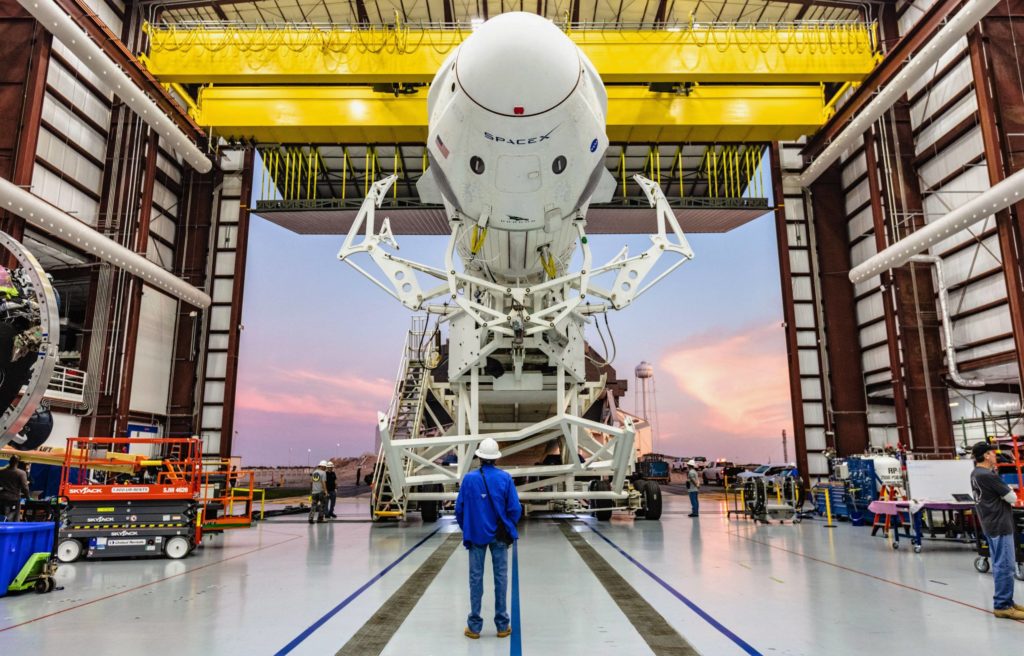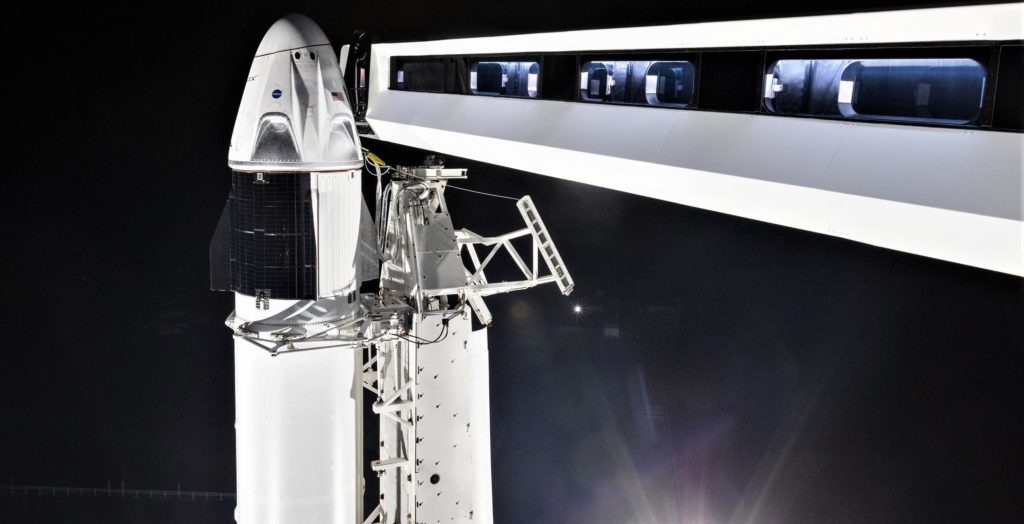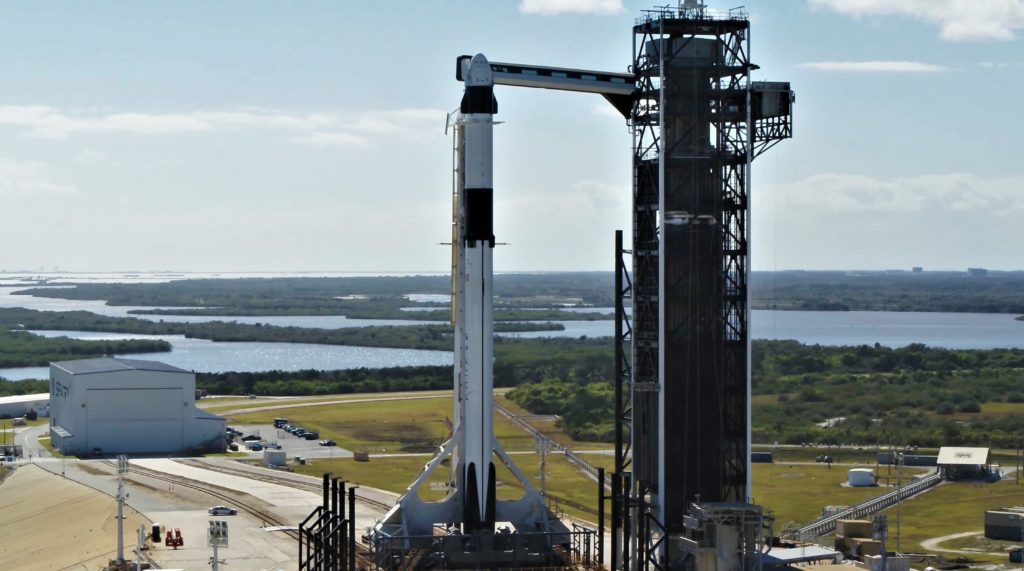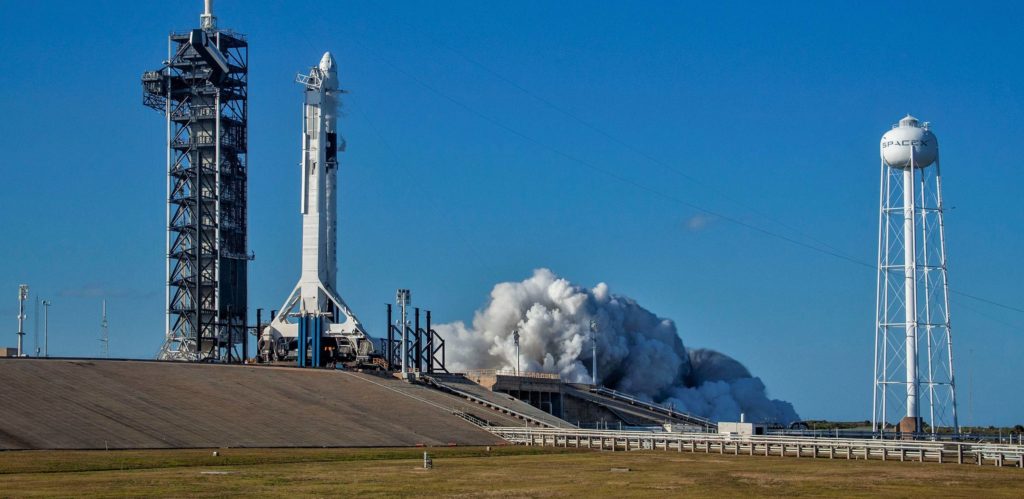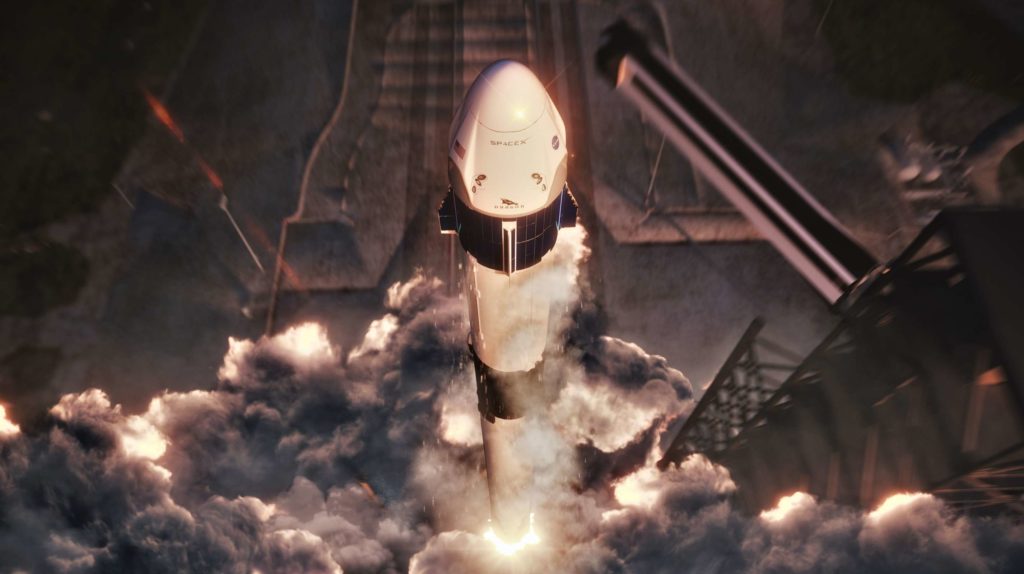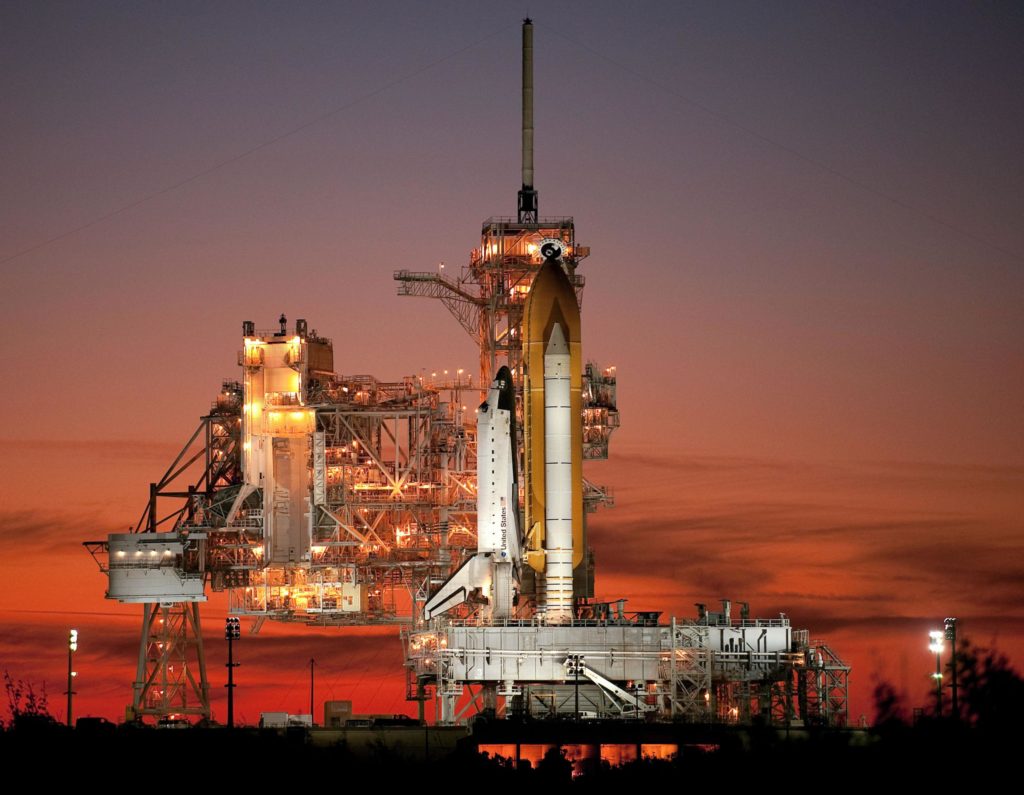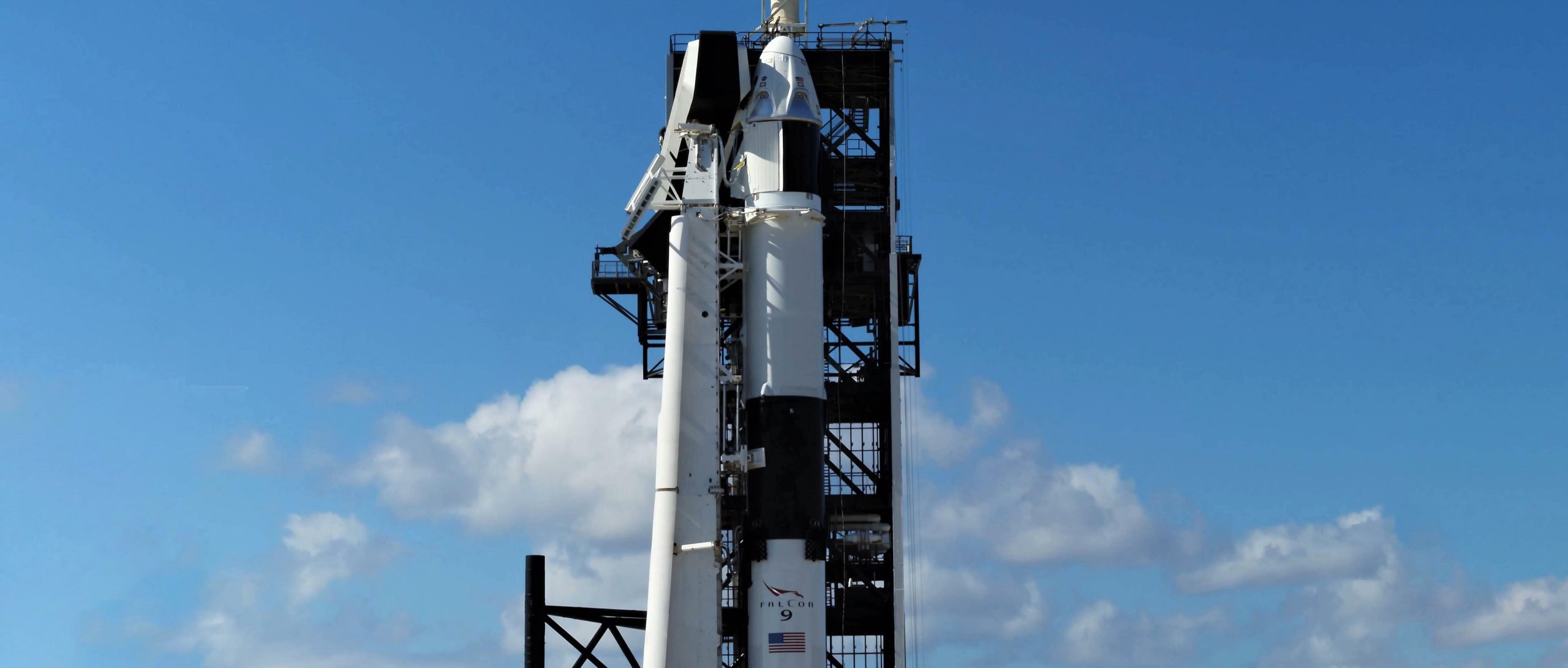
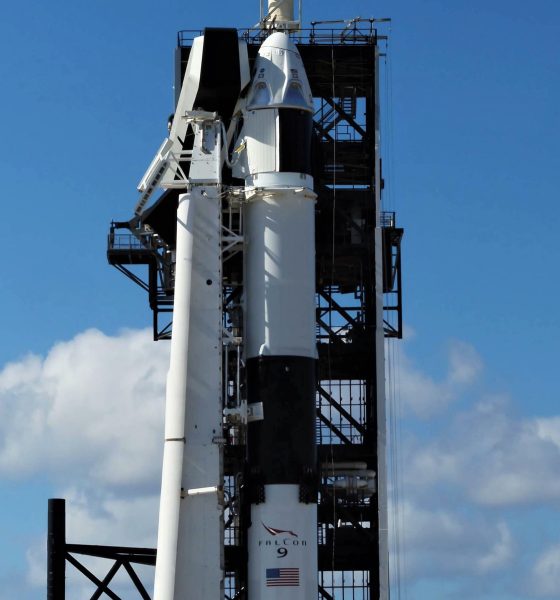
SpaceX
SpaceX’s Crew Dragon and Falcon 9 head to Pad 39A for historic launch debut
NASA has confirmed that a Feb. 27th launch readiness review (LRR) prior to the orbital debut of SpaceX’s Crew Dragon spacecraft concluded with all parties remaining “go” for the historic launch.
Scheduled to liftoff at 2:48 am EST (07:48 UTC) on March 2nd, Falcon 9 and Crew Dragon can now begin to roll out to Launch Complex 39A (‘Pad 39A’) and complete final preflight checks approximately 24-48 hours before launch. After relentless work over the last few months, SpaceX has also largely completed a significant series of changes – many aesthetic – to Pad 39A, giving the historic complex a sleek new black and white paint scheme and enclosed tower (FSS).
And there's the confirmation the LRR was completed and with a GO. Rollout is next. Expect lots of cool photos especially with the 39A FSS now fully "cladded" compared to the photo in the tweet during the Static Fire test. https://t.co/SQHcd3Ahgo
— NSF – NASASpaceflight.com (@NASASpaceflight) February 28, 2019
Falcon 9, Crew Dragon “go” for launch
Following up the Flight Readiness Review (FRR) five days later, the completion of the Launch Readiness Review (LRR) effectively means that SpaceX can now proceed into launch operations a bit like any other mission, rolling the rocket and spacecraft out to Pad 39A, taking the assembly vertical, and finally completing (relatively) routine preflight preparations. SpaceX pad engineers and technicians have already completed a wet dress rehearsal (WDR) and static fire test over the last two months, meaning that they have already gained a significant amount of real-world experience working with and operating the brand new Crew Dragon spacecraft and its human-rated Falcon 9 rocket.
This milestone has been the better part of a decade in the making, beginning in 2009 or 2010 (depending on definitions) with funding from NASA dedicated to what would ultimately become the Commercial Crew Program (CCP). SpaceX did not begin to receive rewards or dedicated Crew Dragon-related funding until April 2011, when NASA awarded the company $75M to develop the spacecraft’s proposed integral abort system, relying on a newly developed Super Draco engine. In August 2012, NASA awarded Sierra Nevada, SpaceX, and Boeing several hundred million dollars each to continue serious development of their respective crewed spacecraft and launch vehicles, followed in 2014 by firm long-term contracts with SpaceX and Boeing to bring their Crew Dragon and Starliner vehicles to fruition.
- The integrated DM-1 Crew Dragon ‘stack’ rolled out to Pad 39A for the first time in the first few days of 2019. (SpaceX)
- Crew Dragon and its crew-rated Falcon 9 went vertical at a launch pad (Pad 39A) for the first time ever on January 4th. (SpaceX)
- Crew Dragon and Falcon 9 B1051 stand vertical at Pad 39A during preparations for a late January static fire test. (SpaceX)
- SpaceX completed a successful static fire of the first Falcon 9 rated for human flight on January 24th. (SpaceX)
- An official SpaceX render shows Falcon 9 and Crew Dragon lifting off from Pad 39A. (SpaceX)
Of note, SpaceX’s contract was valued at $2.6B, while Boeing received $4.2B, a full 60% more to complete an effectively identical task. Sadly, the US Congress systematically underfunded CCP during its formative years, largely a consequence of entrenched political and financial interests in preferentially funding NASA’s own SLS rocket and crewed Orion spacecraft above and at the cost of other rocket and spacecraft development initiatives. Insufficient funding likely contributed heavily to the years of delays subsequently suffered by the program and its commercial providers, pushing a nominal launch debut target from 2015 to 2017 before ultimately moving to 2018 and finally 2019, largely a result of unsurprising technical challenges faced by each provider as they entered into hardware- and testing-rich phases of development.
After approximately 5-6 years of concerted work, SpaceX and NASA are now as ready as they’ll ever be to conduct the first orbital launch of the Commercial Crew Program, to be followed as early as by Boeing’s own uncrewed orbital demonstration of its Starliner spacecraft. For those that have followed CCP for even part of its years-long saga, it’s more than a little surreal to be faced with the reality that such a milestone is barely two days distant.
Pad 39A: more than just a fresh coat
Meanwhile, SpaceX’s leased Pad 39A launch complex has undergone its own significant changes. Dating back to NASA’s Apollo Program, Pad 39A supported all but one of Saturn V’s 13 launches and more than 80 Space Shuttle launches before SpaceX took over the pad in 2014. In the five years the company has leased the facility, a range of changes have been made to the pad’s hardware, support facilities, and the primary metalwork known as service structures, one fixed (FSS) and one rolling (RSS). Aside from a bare skeleton of the RSS hinge, SpaceX has completely removed several hundred tons of Shuttle support hardware, while the FSS (the skyscraper-like rectangular tower) has remained largely unchanged, aside from the installation of a new level and Crew Dragon’s Crew Access Arm (CAA) on the ~110m (350 ft) tower.
- Space Shuttle Atlantis prepares for STS-129’s Pad 39A launch, November 2009. (NASA/Bill Ingalls)
- 39A is seen here on February 11th, 2009 from a very similar angle to the 2009 photo of Shuttle Atlantis. (Tom Cross)
- Falcon 9 and Crew Dragon vertical at Pad 39A. (SpaceX)
- SpaceX technicians work on the tower and access arm, Feb. 11. (Tom Cross)
Most recently, the company has pursued a series of visually distinct changes to tower, painting it almost entirely black with white highlights and installing partially transparent black plexiglass panels along the full length of at least 2-3 of its four walls. While the paint color is almost certainly aesthetically motivated (it matches Falcon 9, Crew Dragon, and the access arm), the decision to enclose all or most of the FSS will likely be very well received the astronauts and technicians it will ultimately support, especially if SpaceX manages to keep out Florida’s notorious mosquitoes.
If SpaceX’s uncrewed DM-1 Crew Dragon demonstration is a success, the company could follow it up with Crew Dragon’s first launch with astronauts aboard as early as July 2019, officially returning 39A to active place in human spaceflight and marking the end of more than eight years spent without a domestic solution for transporting US astronauts into orbit.
Check out Teslarati’s newsletters for prompt updates, on-the-ground perspectives, and unique glimpses of SpaceX’s rocket launch and recovery processes!

Investor's Corner
SpaceX IPO is coming, CEO Elon Musk confirms
However, it appears Musk is ready for SpaceX to go public, as Ars Technica Senior Space Editor Eric Berger wrote an op-ed that indicated he thought SpaceX would go public soon. Musk replied, basically confirming it.

Elon Musk confirmed through a post on X that a SpaceX initial public offering (IPO) is on the way after hinting at it several times earlier this year.
It also comes one day after Bloomberg reported that SpaceX was aiming for a valuation of $1.5 trillion, adding that it wanted to raise $30 billion.
Musk has been transparent for most of the year that he wanted to try to figure out a way to get Tesla shareholders to invest in SpaceX, giving them access to the stock.
He has also recognized the issues of having a public stock, like litigation exposure, quarterly reporting pressures, and other inconveniences.
However, it appears Musk is ready for SpaceX to go public, as Ars Technica Senior Space Editor Eric Berger wrote an op-ed that indicated he thought SpaceX would go public soon.
Musk replied, basically confirming it:
As usual, Eric is accurate
— Elon Musk (@elonmusk) December 10, 2025
Berger believes the IPO would help support the need for $30 billion or more in capital needed to fund AI integration projects, such as space-based data centers and lunar satellite factories. Musk confirmed recently that SpaceX “will be doing” data centers in orbit.
AI appears to be a “key part” of SpaceX getting to Musk, Berger also wrote. When writing about whether or not Optimus is a viable project and product for the company, he says that none of that matters. Musk thinks it is, and that’s all that matters.
It seems like Musk has certainly mulled something this big for a very long time, and the idea of taking SpaceX public is not just likely; it is necessary for the company to get to Mars.
The details of when SpaceX will finally hit that public status are not known. Many of the reports that came out over the past few days indicate it would happen in 2026, so sooner rather than later.
But there are a lot of things on Musk’s plate early next year, especially with Cybercab production, the potential launch of Unsupervised Full Self-Driving, and the Roadster unveiling, all planned for Q1.
News
SpaceX reportedly mulling IPO, eyeing largest of all time: report
“I do want to try to figure out some way for Tesla shareholders to participate in SpaceX. I’ve been giving a lot of thought to how to give people access to SpaceX stock,” Musk said.
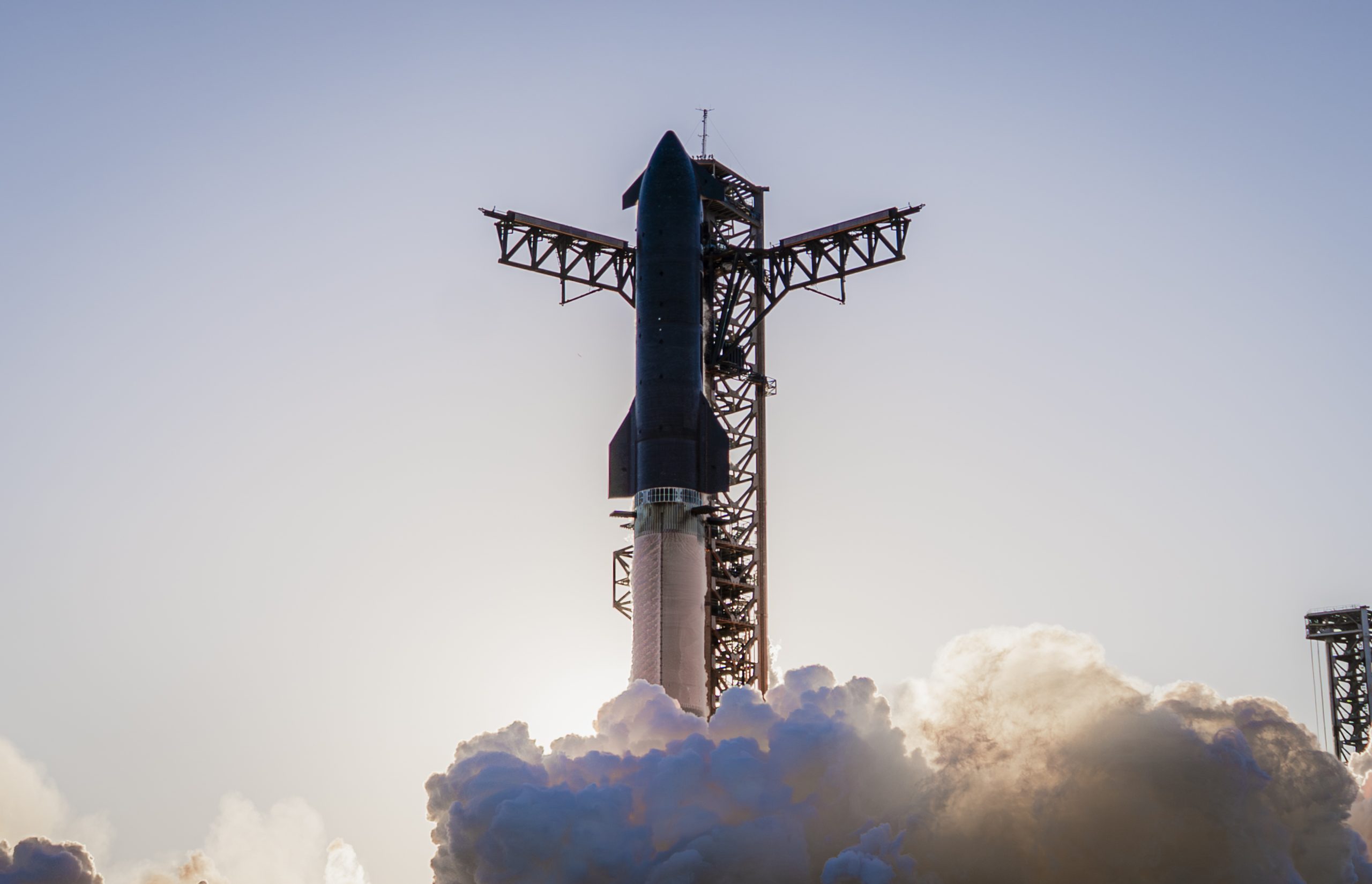
SpaceX is reportedly mulling an initial public offering, eyeing what would be the largest valuation at the time of availability of all time, a new report from Bloomberg said on Tuesday.
It is one of many reports involving one of Elon Musk’s companies and a massive market move, as this is not the first time we have seen reports of an IPO by SpaceX. Musk himself has also dispelled other reports in the past of a similar nature, including an xAI funding round.
SpaceX and Musk have yet to comment on the report. In the past, untrue reports were promptly replied to by the CEO; this has not yet gained any response, which is a good sign in terms of credibility.
However, he said just a few days ago that stories of this nature are inaccurate:
“There has been a lot of press claiming SpaceX is raising money at $800B, which is not accurate. SpaceX has been cash flow positive for many years and does periodic stock buybacks twice a year to provide liquidity for employees and investors. Valuation increments are a function of progress with Starship and Starlink and securing global direct-to-cell spectrum that greatly increases our addressable market. And one other thing that is arguably most significant by far.”
There has been a lot of press claiming @SpaceX is raising money at $800B, which is not accurate.
SpaceX has been cash flow positive for many years and does periodic stock buybacks twice a year to provide liquidity for employees and investors.
Valuation increments are a…
— Elon Musk (@elonmusk) December 6, 2025
Musk has discussed a potential IPO for SpaceX in recent months, as the November 6 shareholder meeting, as he commented on the “downsides” of having a public company, like litigation exposure, quarterly reporting pressures, and other inconveniences.
Nevertheless, Musk has also said he wants there to be a way for Tesla shareholders to get in on the action. At the meeting in early November, he said:
“I do want to try to figure out some way for Tesla shareholders to participate in SpaceX. I’ve been giving a lot of thought to how to give people access to SpaceX stock.”
Additionally, he added:
“Maybe at some point., SpaceX should become a public company despite all the downsides of being public.”
Musk has been historically reluctant to take SpaceX public, at times stating it could become a barrier to colonizing Mars. That does not mean it will not happen.
Bloomberg’s report cites multiple unidentified sources who are familiar with the matter. They indicate to the publication that SpaceX wants to go public in mid-to-late 2026, and it wants to raise $30 billion at a valuation of around $1.5 trillion.
This is not the first time SpaceX has discussed an IPO; we reported on it nine years ago. We hope it is true, as the community has spoken for a long time about having access to SpaceX stock. Legendary investor Ron Baron is one of the lucky few to be a SpaceX investor, and said it, along with Tesla, is a “lifetime investment.”
Tesla bull Ron Baron reveals $100M SpaceX investment, sees 3-5x return on TSLA
The primary driver of SpaceX’s value is Starlink, the company’s satellite internet service. Starlink contributes 60-70 percent of SpaceX’s revenue, meaning it is the primary value engine. Launch services, like Falcon 9 contracts, and the development of Starship, also play supporting roles.
News
SpaceX reaches incredible milestone with Starlink program
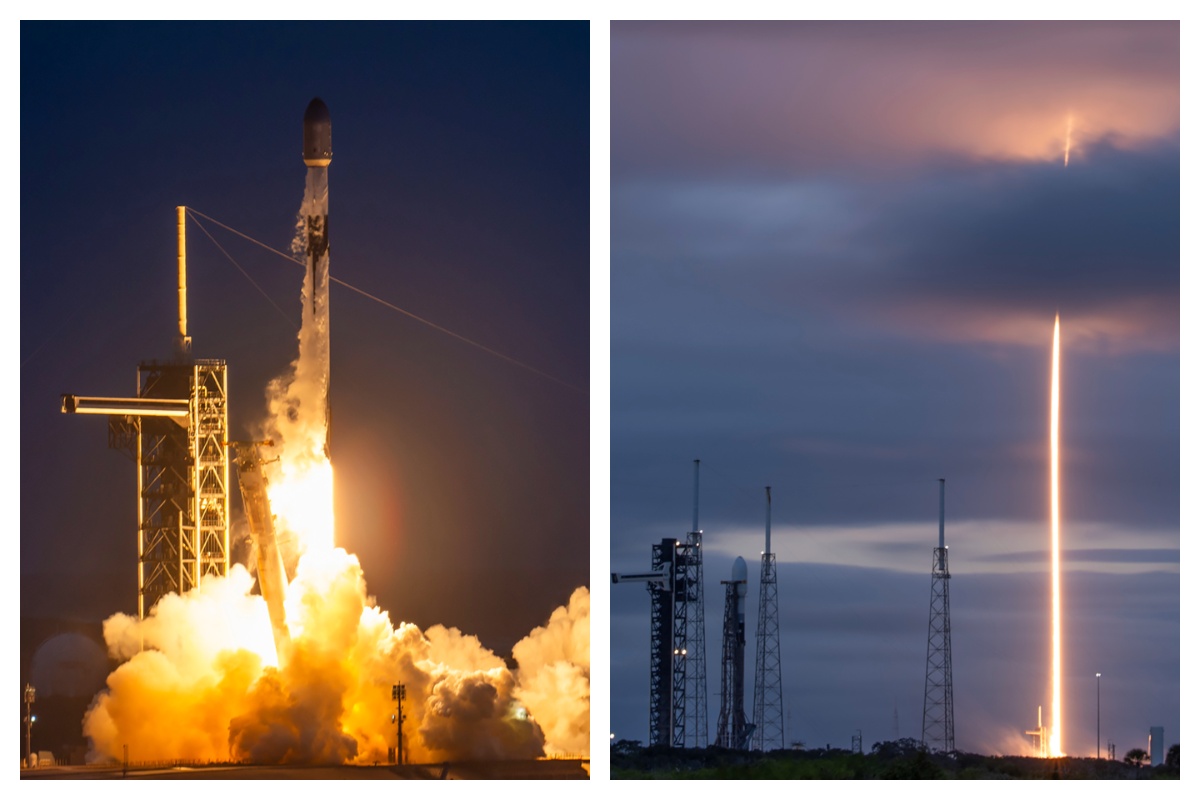
SpaceX reached an incredible milestone with its Starlink program with a launch last night, as the 3,000th satellite of the year was launched into low Earth orbit.
On Monday, SpaceX also achieved its 32nd flight with a single Falcon 9 rocket from NASA’s Kennedy Space Center.
The mission was Starlink 6-92, and it utilized the Falcon 9 B1067 for the 32nd time this year, the most-used Falcon booster. The flight delivered SpaceX’s 3000th Starlink satellite of the year, a massive achievement.
There were 29 Starlink satellites launched and deployed into LEO during this particular mission:
Falcon 9 launches 29 @Starlink satellites from Florida pic.twitter.com/utKrXjHzPN
— SpaceX (@SpaceX) December 9, 2025
SpaceX has a current goal of certifying its Falcon boosters for 40 missions apiece, according to Spaceflight Now.
The flight was the 350th orbital launch from the nearby SLC-40, and the 3,000 satellites that have been successfully launched this year continue to contribute to the company’s goal of having 12,000 satellites contributing to global internet coverage.
There are over five million users of Starlink, the latest data shows.
Following the launch and stage separation, the Falcon 9 booster completed its mission with a perfect landing on the ‘Just Read the Instructions’ droneship.
The mission was the 575th overall Falcon 9 launch, highlighting SpaceX’s operational tempo, which continues to be accelerated. The company averages two missions per week, and underscores CEO Elon Musk’s vision of a multi-planetary future, where reliable connectivity is crucial for remote work, education, and emergency response.
As Starlink expands and works toward that elusive and crucial 12,000 satellite goal, missions like 6-92 pave the way for innovations in telecommunications and enable more internet access to people across the globe.
With regulatory approvals in over 100 countries and millions of current subscribers, SpaceX continues to democratize space, proving that reusability is not just feasible, but it’s also revolutionary.
